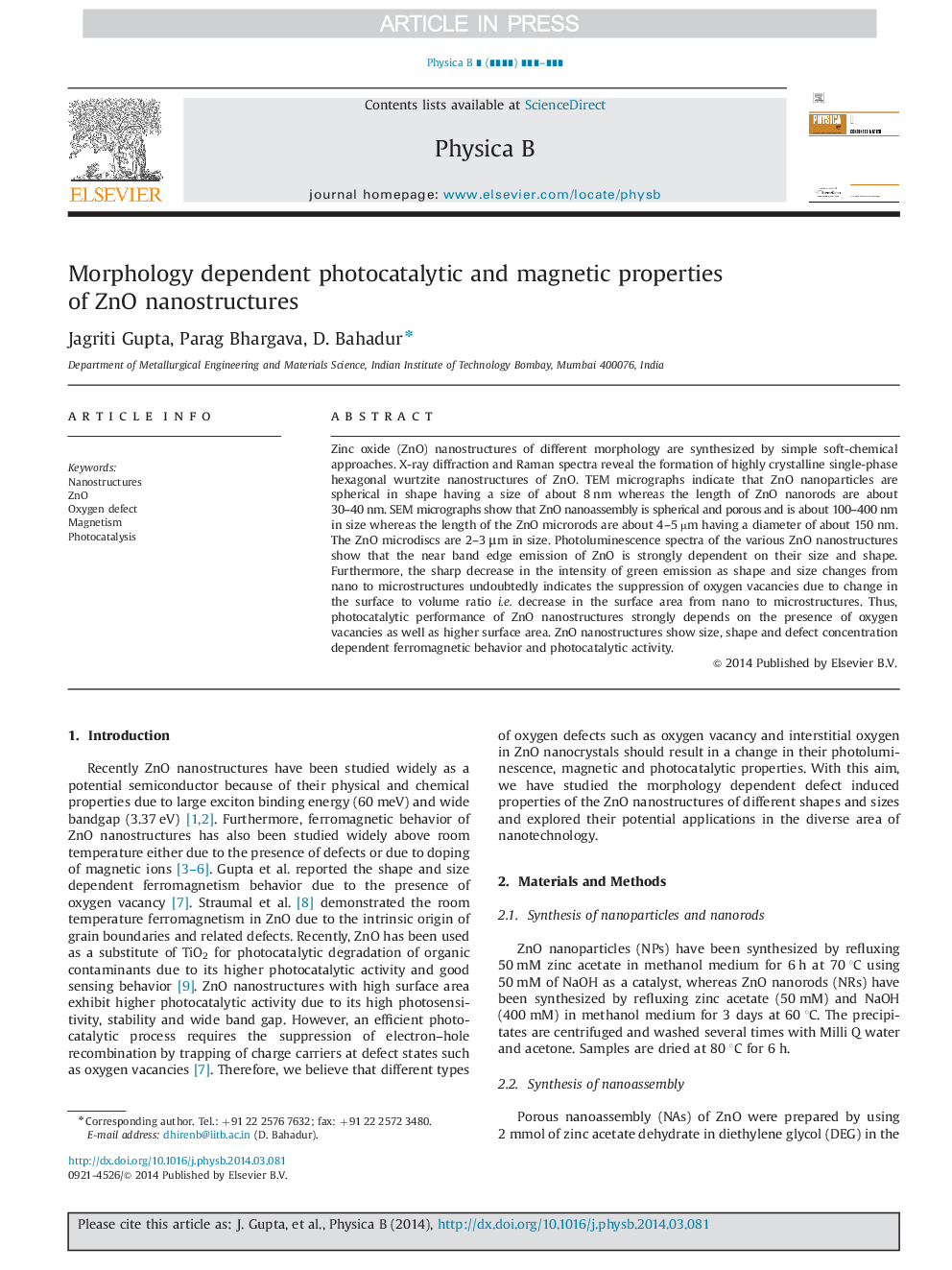| Article ID | Journal | Published Year | Pages | File Type |
|---|---|---|---|---|
| 8162573 | Physica B: Condensed Matter | 2014 | 4 Pages |
Abstract
Zinc oxide (ZnO) nanostructures of different morphology are synthesized by simple soft-chemical approaches. X-ray diffraction and Raman spectra reveal the formation of highly crystalline single-phase hexagonal wurtzite nanostructures of ZnO. TEM micrographs indicate that ZnO nanoparticles are spherical in shape having a size of about 8 nm whereas the length of ZnO nanorods are about 30-40 nm. SEM micrographs show that ZnO nanoassembly is spherical and porous and is about 100-400 nm in size whereas the length of the ZnO microrods are about 4-5 µm having a diameter of about 150 nm. The ZnO microdiscs are 2-3 μm in size. Photoluminescence spectra of the various ZnO nanostructures show that the near band edge emission of ZnO is strongly dependent on their size and shape. Furthermore, the sharp decrease in the intensity of green emission as shape and size changes from nano to microstructures undoubtedly indicates the suppression of oxygen vacancies due to change in the surface to volume ratio i.e. decrease in the surface area from nano to microstructures. Thus, photocatalytic performance of ZnO nanostructures strongly depends on the presence of oxygen vacancies as well as higher surface area. ZnO nanostructures show size, shape and defect concentration dependent ferromagnetic behavior and photocatalytic activity.
Related Topics
Physical Sciences and Engineering
Physics and Astronomy
Condensed Matter Physics
Authors
Jagriti Gupta, Parag Bhargava, D. Bahadur,
